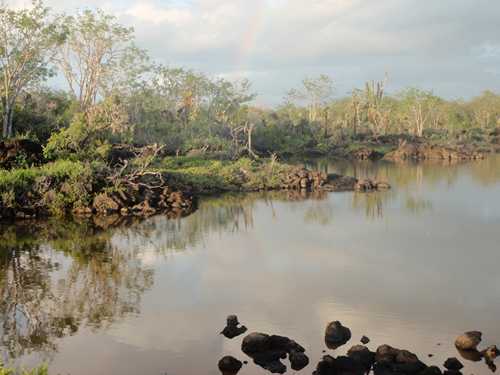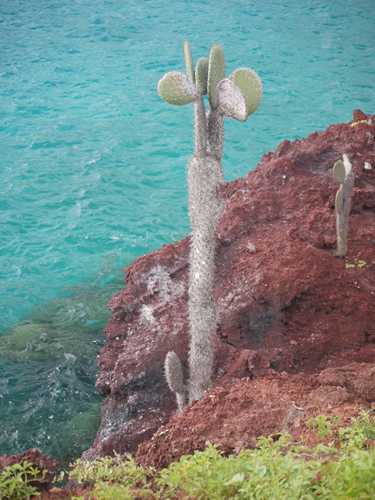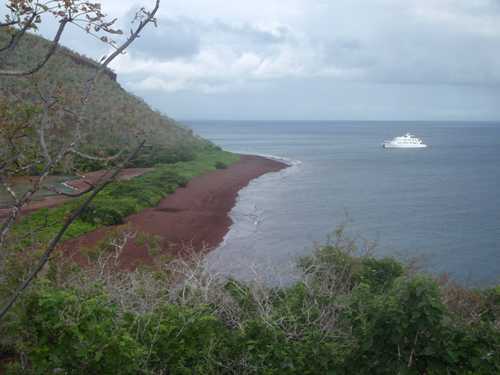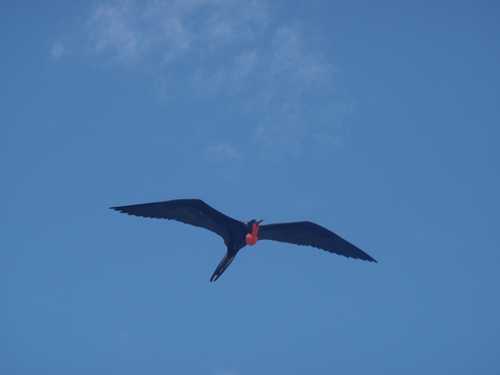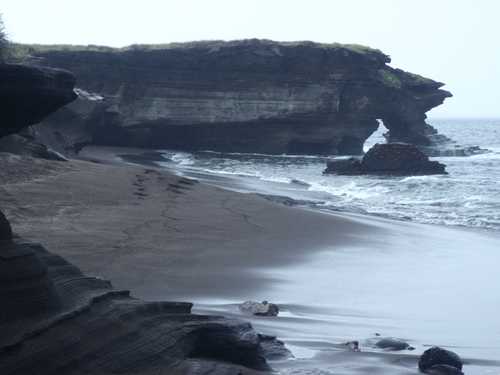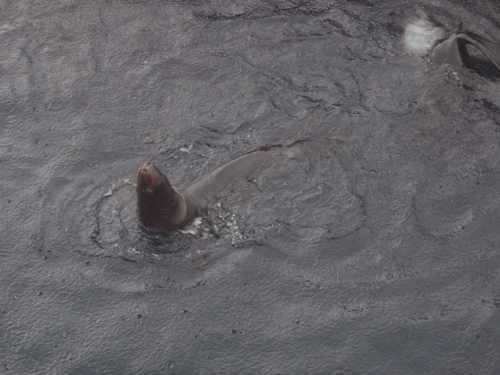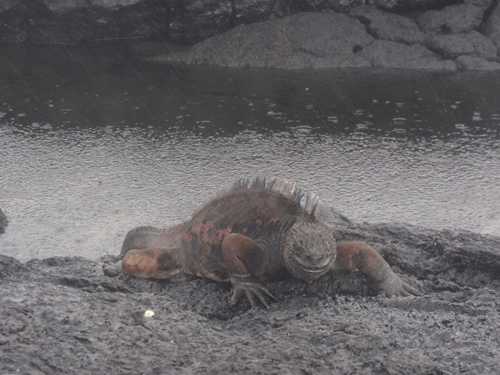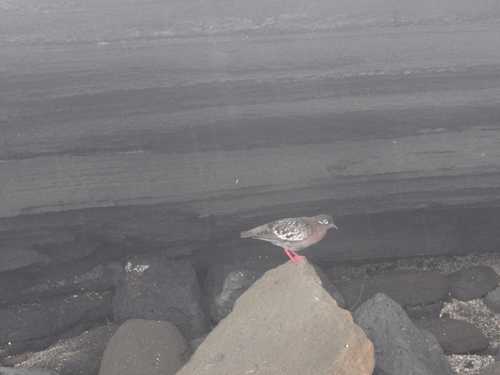Galapagos Cruise - Day 2

|
Thursday 18th March
The wake up call came over the tannoy at 07.00 announcing that breakfast would be served at 07.30. We'd then have an hour to eat our breakfast and get ourselves ready for disembarking at 08.30. The Captain Patricia (a male) had motored north in the night to an island called Rabida. Today we had a wet landing, this one really was wet as it was off the dinghy into the sea, onto a volcano formed red beach. There was a tiny 2-3 week old sea lion pup there to greet us which was spectacular. The guide told us that he was very thin and was likely to die as his mother was likely to have been eaten by a predator whilst out fishing in the sea. However, we'd like to think that that isn't true. We did see him through the binoculars later on with other sea lions so we're hoping that his mother was just out fishing and she had returned - that's what we're deciding happened anyway, it's a much happier ending.
This 5 sq km island, also known as Jervis, is considered to be the geographic centre of the Galapagos because it has the most diverse volcanic rocks on the islands. We hiked to a saltwater lagoon where again Flamingos can sometimes be found but not whilst we were there!
We saw plenty of finches and castuses but not much else so Jack was moaning as much as Eddie this time. Below is a picture of one of Darwins finches and to the right is a baby in a nest in a prickly pear cactus.
Once we'd finished
the hike we were taken from the beach in the dinghy and dropped off around the
corner so that we could snorkel back to the beach. It was a fantastic snorkel
and unfortunately we'd forgotten to take the camera so no pictures of that I'm
afraid. It was a shame as I lost count as to how many white tip and reef sharks
I saw, it was just brilliant. We had sea lions swimming in amongst us all again.
The pups love playing with humans, they do rolls and all sorts right in front of
your face and they have the most beautiful bright blue/lilac eyes. We saw just
the one turtle and lots and lots of interesting fish. All in all a very good
snorkel! We were back on board
by 11.30 as that is the latest anyone is allowed on the island, so as to give
the animals a rest I think. Lunch was served at 12.30 while the Captain motored
to Egas Port on the island of Santiago, the fourth largest of the islands. It
was once a hideout for British bucccaneers and one of the stops on Darwin's
itinerary. On the way to Santiago we were joined by a flock of Frigate birds. We've noticed that for some reason the boobies and frigates like to fly along with boats as their moving. They were probably around 20 all at once and when we went up on the sun deck to watch them they were just within feet of us. Frigate birds have the largenst wingspan to weight ratio of any species of bird and are extremely able and skilled fliers. It also known as the 'man of war' bird due to it piritical habits. Frigatebirds will frequently chase other species, such as Blue or Red billed tropic birds and force them to disgorge their recent catch, often by actually holding the tail feathers, shaking them until the bird disgorges its catch, and then catching it before it hits the water.
I wasn't very well and had only just managed the morning hike so as I was fast asleep I missed out on the second hike but everyone else was ship shape and ready to disembark at 3.00 in the torrential rain! They had a very wet landing on to a black beach and walked along a scenic coast through lots of rock pools.
It's a flat, black lava shoreline where eroded shapes form lava pools, caves and inlets that house a great variety of wildlife. They saw lots and lots of iguanas and a colony of fur seals swimming in the pools within the volcanic rock as well as a huge turtle gracefully floating in amongst them all.
There were great blue herons, lava herons, yellow crowned night herons and oyster catchers and there were also hundreds of sally-light foot crabs in the tide pools. The sally-light foot crab a dramatic scarlet and orange crab growing up to 20 cm across and they can often be found in large numbers. Their name comes from their ability to 'walk on water' as they scurry from one rock to another.
A Galapagos Dove sheltering from the rain
A Lava Heron
Two American Oyster Catchers
A Great Blue Heron When they returned to the beach an inquisitive sea lion was just appearing out the water. He came right up amongst them to see what was going on.
Anyway when Paul came
into the room after the hike I thought he had fallen in the water because he was
so wet, he was quite a sight so I'm quite glad I didn't take part as it wouldn't
have been fun in my fragile condition. |



